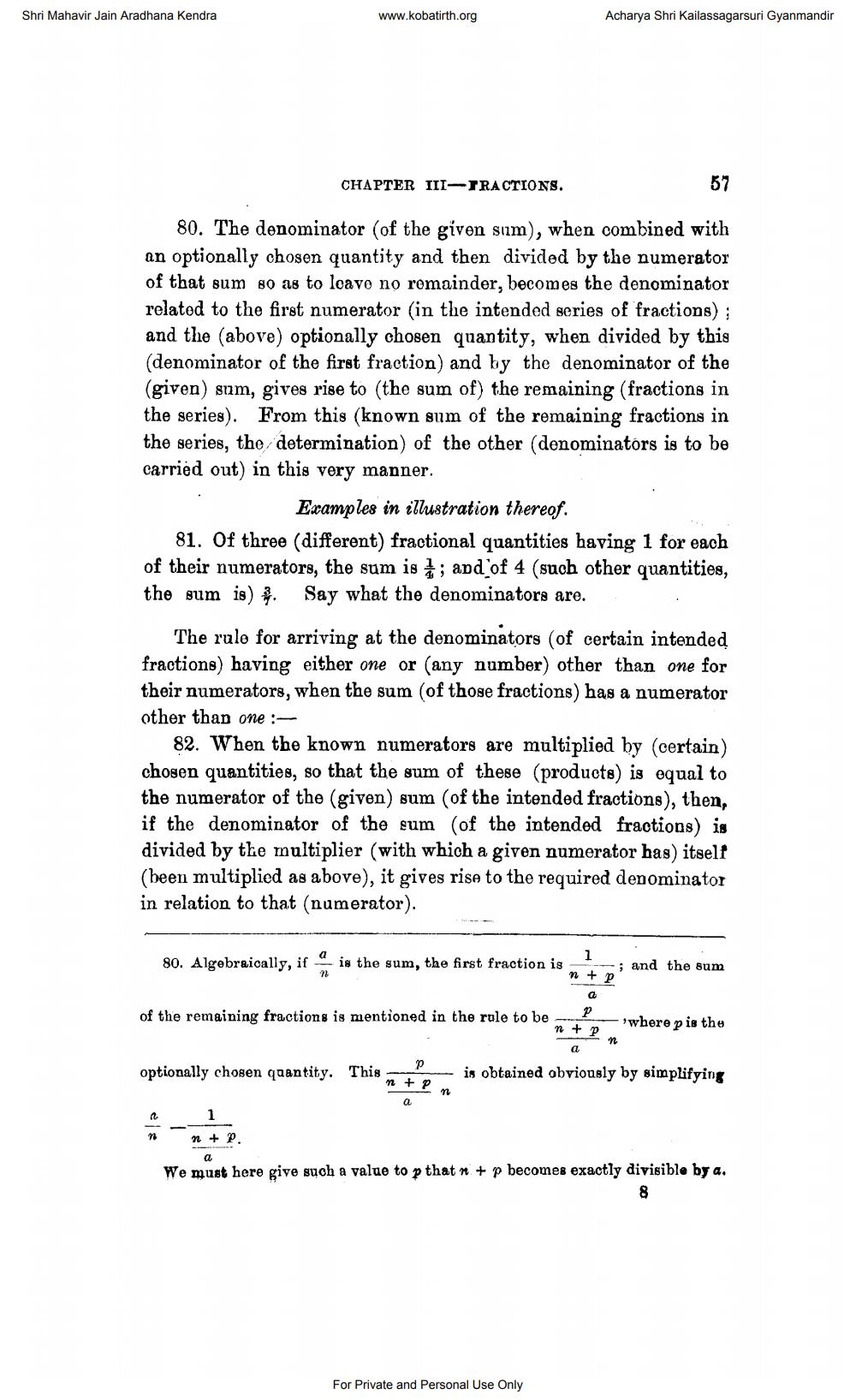________________
Shri Mahavir Jain Aradhana Kendra
www.kobatirth.org
Acharya Shri Kailassagarsuri Gyanmandir
CHAPTER III-TRACTIONS.
57
80. The denominator (of the given sum), when combined with an optionally chosen quantity and then divided by the numerator of that sum so as to loave no romainder, becomes the denominator related to the first numerator in the intended series of fractions) ; and the (above) optionally chosen quantity, when divided by this (denominator of the first fraction) and by the denominator of the (given) sum, gives rise to the sum of) the remaining (fractions in the series). From this (known sum of the remaining fractions in the series, the determination) of the other (denominators is to be carried out) in this very manner.
Examples in illustration thereof. 81. Of three (different) fractional quantities having 1 for each of their numerators, the sum is ; and of 4 (such other quantities, the sum is) 4. Say what the denominators are.
The rule for arriving at the denominators (of certain intended fractions) having either one or (any number) other than one for their numerators, when the sum of those fractions) has a numerator other than one :
82. When the known numerators are multiplied by (certain) chosen quantities, so that the sum of these (products) is equal to the numerator of the (given) sum (of the intended fractions), then, if the denominator of the sum of the intended fractions) is divided by the multiplier (with which a given numerator has) itself (been multiplied as above), it gives rise to the required denominator in relation to that (numerator).
80. Algebraically, it
is the sum, the first fraction is
nt
and the sum
of the remaining fractions is mentioned in the role to be
in + Pn
pa
— 'where p is the
whorenie
p
optionally chosen quantity. This -
is obtained obviously by simplifying
"
n
+ P
__1 n + P.
a We must here give such a value to p that
to not a valo to that not p boones erant
+ p becomes exactly divisible by a.
For Private and Personal Use Only




